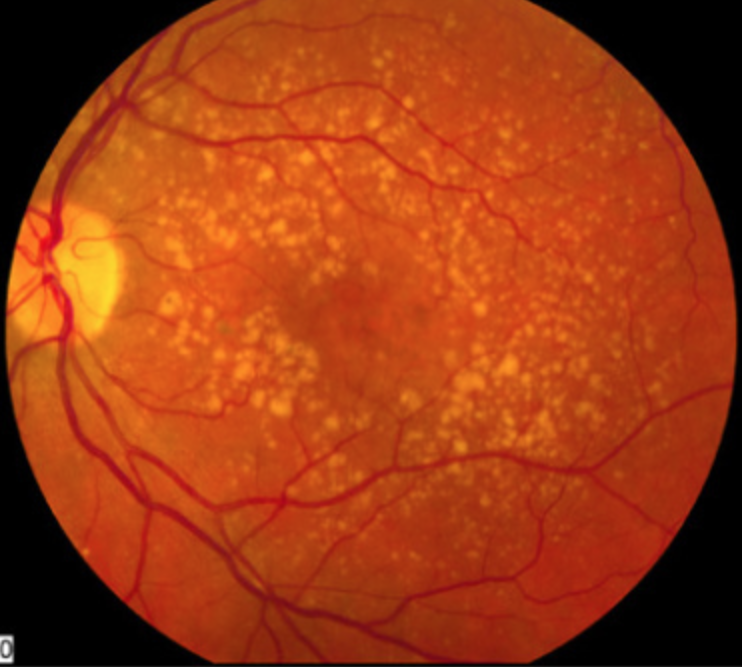 |
| Zeaxanthin supplementation for unilateral nAMD patients decreases fellow-eye long-term incidence and is cost-effective, with the potential for patients and insurers to save $6 billion over 11 years. Photo: NEI. Click image to enlarge. |
It’s been known since the two AREDS trials that carotenoid supplements mitigate AMD risk in appropriately selected patients. In a prior two-year clinical trial, zeaxanthin 20mg reduced fellow-eye two-year neovascular age-related macular degeneration (nAMD) incidence from 23% to 6%. In a new study, published on Monday in Ophthalmology and Therapy, researchers investigated the long-term clinical benefits and cost effectiveness.
Among 227 patients with nAMD/zeaxanthin supplementation, 202 had a five-year follow-up. The fellow-eye nAMD five-year conversion incidence was 22% vs. 48% in data from the landmark Comparison of AMD Treatments Trials (CATT) data. Zeaxanthin supplementation in unilateral nAMD patients treated with triple therapy (photodynamic therapy, bevacizumab and dexamethasone) resulted in improved overall vision by preventing conversion of second eyes with atrophic macular degeneration to nAMD.
An 11-year cost-utility model with estimates for years six through 11 demonstrated a 7.7% quality-adjusted life-year (QALY) gain, including three months of life saved per patient due to decreased nAMD fellow-eye conversion. This yielded a direct ophthalmic medical cost perspective, incremental cost-utility ratio of -$576/QALY and a societal cost perspective cost-utility ratio of -$125,071/QALY, according to the authors.
Zeaxanthin supplementation for all 2020 US unilateral nAMD cases would have theoretically saved society—primarily patients—$6 billion over 11 years, a 1531% return on investment (ROI)—or 31.3% annual ROI—on medication costs, the authors concluded.
“nAMD second-eye prevention is superior to treatment in baseline unilateral nAMD cases. Not only does zeaxanthin supplementation prevention yield a greater QALY gain vs. no supplementation, but it is less costly and results in a large ROI for the zeaxanthin supplementation cost,” the authors explained.
It has been previously shown that 80% of cost saving is returned to patients. “From a societal cost perspective, $63,135 is saved in caregiver costs, and most of $52,530 is returned to baseline unilateral nAMD patients, who spend less due to better vision from decreased nAMD conversion,” the authors explained. “Nonetheless, because zeaxanthin supplementation saves 0.25 life-years at age 90 by reducing fellow-eye nAMD, there is $10,847 excess nonophthalmic, direct medical cost over the 0.25 years accrued to insurers. This illustrates the important issue that time of life saved can increase overall medical costs.”
Brown GC, Brown MM, Gierhart D, Olk RJ. Prevention surpasses treatment: five-year follow-up, cost utility and cost-benefit of zeaxanthin therapy for neovascular age-related macular degeneration. Ophthalmol Ther. July 10, 2023. [Epub ahead of print.] |

